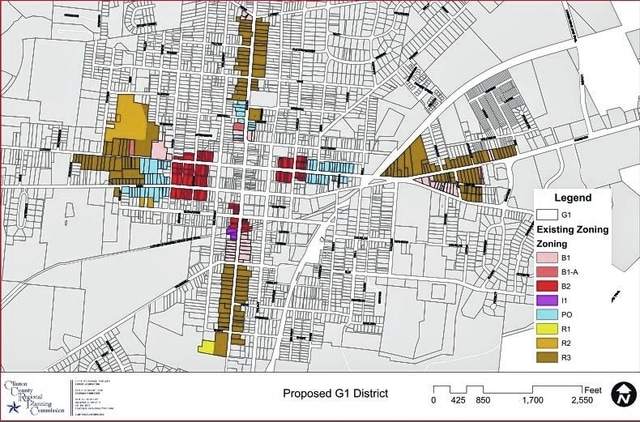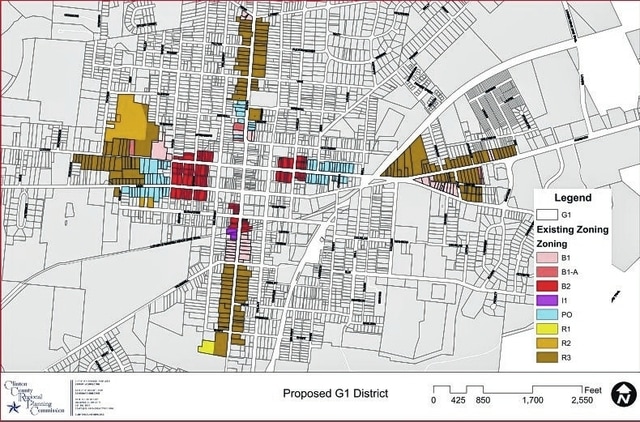

WILMINGTON — One of the more publicly debated items on the Nov. 3 ballot is the G1 Gateway zoning, an ordinance that would rezone more than 370 parcels of land in Wilmington.
Supporters of the ordinance argue that it protects Wilmington’s historic homes and the community’s historic fabric as well as preserving a good first impression on those entering the city.
Opponents argue that it doesn’t provide enough protection for homes, is government overreach and that the city should have provided better notice to those homeowners that are affected by the change.
Taylor Stuckert, executive director of the Clinton County Regional Planning Commission, said the ordinance began based on a citizen’s complaint and council’s desire to preserve historic neighborhoods.
“There was no review process” before a historic home was demolished, Stuckert said. “Council members didn’t know it was going on until it was too late. … We need to do more to protect people’s neighborhoods. These are the first impressions people have when they enter our city. They represent the historic character of our city.”
Stuckert said it’s only natural to update zoning as a community’s goals change.
“Your zoning should align with your vision, and the existing zoning in this area does not align with the vision of protecting neighborhoods,” Stuckert said.
Vince Holmes, a member of the Wilmington Citizens Referendum Committee, which has put up signs and mailed letters opposing the ordinance, submitted a prepared statement speaking against the G1 ordinance. It was signed by the committee.
Holmes and the committee wrote that they turned to the referendum process when their pleas fell upon “deaf” city council ears.
“The best argument against the ordinance is the ordinance itself,” the statement read. “It is one big power grab.”
The committee’s statement said many citizens have been unhappy upon reading the ordinance, which the committee mailed to thousands of registered voters — even “downright indignant.”
“This is a property rights issue,” said the committee’s statement. “We thought our names on the deeds made us the owners. The Mayor, City Council, the spokesperson for Clinton County Planning Commission and influential people evidently think they are part owners.”
Public awareness
One of the issues Holmes and the committee focused on in their statement was council’s notice to residents. The city, the statement read, only notified people of the change to their property’s zone through a classified ad in the News Journal.
“This is no small thing,” the statement said. “Zoning is precious. We had to make the public aware as the City failed miserably at notifying their intentions.”
The committee’s statement said council should have mailed notices to the affected parcel owners and their immediate neighbors.
“Those neighbors will be impacted as the yards adjoin,” Holmes said. “They too can suffer loss of property value and/or quality of life.”
Stuckert said news coverage of G1 notified many residents.
“To say the only notice given was a classified ad is really unfair,” he said, adding that it was on the front page of the News Journal multiple times, including several times that also featured the map of affected parcel owners.
The bottom line
Stuckert reiterated his belief that the ordinance, if approved by voters, will protect Wilmington’s historic homes and main entrances.
He said the CVS recently built downtown replaced a historic building that used to be a residence, was formerly a commercial club, housed dozens of businesses over the years and once was home to a dance studio.
Now, “CVS is probably the only user that would use that building.”
Large developments, like CVS, he said, limit future uses while small ones, like professional offices for lawyers, don’t and can even be converted back to a home.
“Buildings that are built with a user in mind, like a CVS or a grocery store, when they are abandoned, then we are left with a structure that is very hard to market, very hard to activate again,” Stuckert said. “That’s not good for our community, and these structures do not contribute to the unique identity of our community.”
Holmes and the committee said residents in the G1 zone are now dependent upon the “large, voting public” to decide if residents or the general public owns their properties “like three wolves and a sheep voting on what is for supper,” the statement read.
“In spite of the situation, we are encouraged, due to the response from many fellow citizens that they will not sit by and let this pass,” the statement continued. “Some are agitated and see this government overreach for what it truly is.”
Reach Nathan Kraatz at 937-382-2574, ext. 2510 or on Twitter @NathanKraatz.



